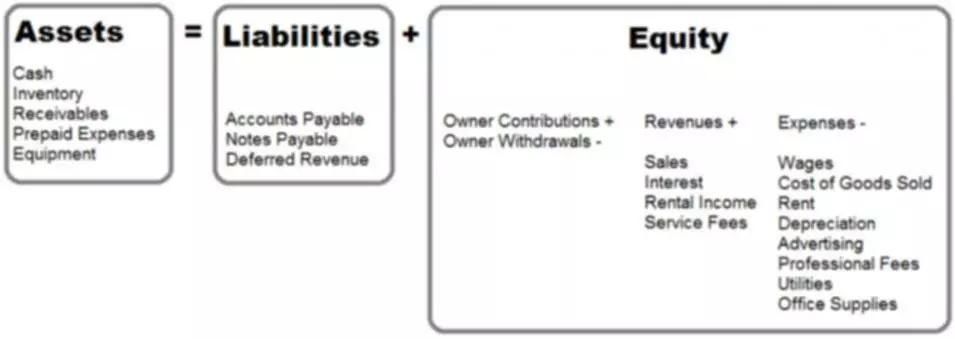Content

The difference is that Form 1065 is a summary schedule of all the partners’ shares of the partnership’s income, credits, deductions, etc. On the other hand, a K-1 shows each partner’s separate share — and a copy of each partner’s K-1 should be submitted with Form 1065. Schedule B has the header “Other information” and asks technical questions about your partnership.

Our example partnership has all general, individual partners, so the entire income is shown on both line 1 and line 2a, column ii. If “yes,” then the partnership isn’t required to complete Schedules L, M-1, and M-2; item F on page 1 of Form 1065; or item L on Schedule K-1. Our sample corporation https://www.bookstime.com/articles/what-is-form-1065 answers “yes” to this question—however, for illustrative purposes, we’re going to complete those schedules. The partnership’s total assets at the end of the tax year were less than $1 million. Special tax deductions, such as Section 179, are also shown directly on Schedule K instead of Page 1.
Expert does your taxes
However, limited partners are subject to slightly different tax treatment than general partners. Even though partnerships aren’t taxed, they must file a tax return each year unless the partnership has no income or expenses. The aim of Schedule L is to deploy the IRS with the information of all the liabilities, assets, and equity of the partnership, right from the start to the completion of the tax year. For those who access QuickBooks Online, such information will appear directly from balance sheet report directly. If you replied “Yes” to question 4 on Schedule B, it is not mandatory for to finish Schedule L. If you have other income or losses from estates or trusts owned by your partnership, farming operations, or selling business property, you’ll enter those figures on lines 4-7.
Each partner then pays their share of the taxes on their personal tax return. To give partners the information they need to report their taxes, each one receives a Schedule K-1 showing their share of each type of the partnership’s income, deductions, and tax credits. The partner then includes this income with other sources of income on their personal tax return. As discussed above, Form 1065 is one of the more important tax forms and is used to record business income, expenses, deductions, and credits for flow-through entities. Some other structures that use this form include foreign partnerships with US income, nonprofit religious organizations, and LLPs.
How to Fill Out Form 1065
A few factors that might contribute to these differences are tax-exempt interest, guaranteed payments and depreciation. This includes the remainder of Page 1, Schedule B, Schedule K, Schedule L, and Schedule M-1 and M2. These sections cover items like partnership property, capital accounts of partners, differences between net income on the financial statement https://www.bookstime.com/ and on the tax return, and balance sheets. Each partner will then use their K-1 to report their share of the business profits and losses on Schedule E (Supplemental Income and Loss) of their personal tax return. Partners also use information from Schedule K-1 on Schedule SE (Form 1040) to figure out their tax due on net earnings from self-employment.
If you need any help filing taxes for on behalf of a partnership, get help from the pros. The sum of all the partners’ Schedule K-1s should agree with the figures on Schedule K. If the partnership fails to furnish a Schedule K-1 (and K-3, if applicable) to a partner when due, this can also result in a penalty. For each failure in the 2022 tax year, a $290 penalty may be imposed for each Schedule K-1 (and K-3, if applicable) for which a failure occurs. The maximum penalty is $3,532,500 for all such failures during the 2022 tax year. If the partnership intentionally disregards the need to report correct information, each $290 penalty is increased to $580 or, if greater, 10% of the aggregate amount of items required to be reported.
When and Where To File Form 1065
However, if your answer was “yes” to question 4 on Schedule B, you’ll want to skip it. With all of the above information, you’re now ready to fill in your Form 1065. The remaining four pages are schedules, which we’ll review later in this guide. All features, services, support, prices, offers, terms and conditions are subject to change without notice.
Form 1065 is the Internal Revenue Service (IRS) federal tax return for all types of business partnerships, including general partnerships, limited partnerships, and limited liability partnerships. An LLC with no business activity that is taxed as a partnership is not required to file a partnership tax return unless there are expenses or credits that the LLC wants to claim. You’ll want to have all of your financial documents and information handy when starting this process to make it as efficient as possible.
Step 6: Fill Out Form 1065 Schedule L Balance Sheet
Lines 14 through 21 of Schedule K are for informational purposes and are needed to figure out how much a partner has to pay on their individual tax return. It’s fine for amounts on lines 14 through 21 to also be included on page 1. For example, foreign interest payments listed on line 16(i) should also be deducted as an interest expense on page 1. Partnerships don’t pay tax on their income, but the individual partners do. The Analysis of Net Income (Loss) section adjusts the partnership’s net income and losses for general partners and limited partners. General partners participate in the administration of the business, have the power to sign contracts and loans on behalf of the firm, and have personal liability for debts and obligations.

Schedule M-2 looks at the total of all partner accounts through the year. Each owner must show their pro-rata share of partnership income, credits, and deductions on Schedule K-1 (1065). Generally, members of LLCs filing Partnership Returns pay self-employment tax on their share of partnership earnings. If you do not file the IRS Form 1065 on time, you’ll face a penalty. As a small business owner, you are responsible for organizing, filing, and paying your taxes.
Can You File an Extension for Form 1065?
Form 1065 is used by partnership firms to file tax return and report the income and expense of the business. Multimember limited liability companies that are not taxes as S corporations should file Form 1065. While state rules vary, pass-through entities generally don’t pay taxes. All income is passed through to owners on Schedule K-1 to report on their individual income tax returns. Pass-through entities don’t pay the federal corporate income tax—only C corporations are subject to this taxation. If a partnership neither receives income nor incurs any expenses which would qualify it to claim deductions or tax credits, it doesn’t need to file Form 1065.
This important document clearly defines business roles, registered states and of course, the business structure. It can distinguish between general partnership, limited partnership (LP) and limited liability partnership (LLP). The main difference between general and limited partnerships is that the main partners in an LLP or LP have limited personal liability.
Where to File Form 1065?
Once you’ve completed the entire 1065 Form, take the time to carefully review it. When you confirm that it’s good to go, submit it online or by mail by the deadline. Make sure you attach any required forms like Form 1040 Schedule F, Form 8825, Form 1125-A, and Form 8941. Regardless of if you’re a new small business owner or have owned a small business for years, the IRS Form 1065 can be tricky to understand.
2022 Limited Liability Company Tax Booklet California Forms … – Franchise Tax Board
2022 Limited Liability Company Tax Booklet California Forms ….
Posted: Thu, 05 Jan 2023 22:30:08 GMT [source]
If you own a partnership or LLC, you must complete an IRS Form 1065. Return of Partnership, IRS Form 1065 is how you’ll report your business finances to the IRS. The types of partnerships that benefit from filing Form 1065 include foreign partnerships, domestic partnerships, and even nonprofit religious groups.
What Is Form 1065: U.S. Return of Partnership Income?
The partnership tax owed is reported by individual partners on their tax returns. Schedule B isn’t like the personal tax return version as it doesn’t reflect interest and dividend income. On the other hand, it goes into detail regarding business structures and outside ownership. In fact, it asks questions about individuals owning more than 50% of the entity, as well as other businesses having more than a 50% ownership in the entity. Schedule K-1 consists of more than just ordinary business income or losses. It also shows income from real estate, interest on bonds, royalties and dividends, capital gains, foreign transactions, and any other payments you received as part of your partnership.
- Instead, they should be reported directly on Schedule K. Including them on both page 1 and Schedule K would double-count them.
- If the due date falls on a Saturday, Sunday, or legal holiday, the IRS will consider a return filed by the next day as on time.
- Return of Partnership, IRS Form 1065 is how you’ll report your business finances to the IRS.
- However, if your answer was “yes” to question 4 on Schedule B, you’ll want to skip it.
- In fact, one partner is designated to sign on behalf of the partnership.
- Businesses must submit Form 1065 and Schedule K-1s by the 15th day of the third month after the partnership’s tax year ends.

